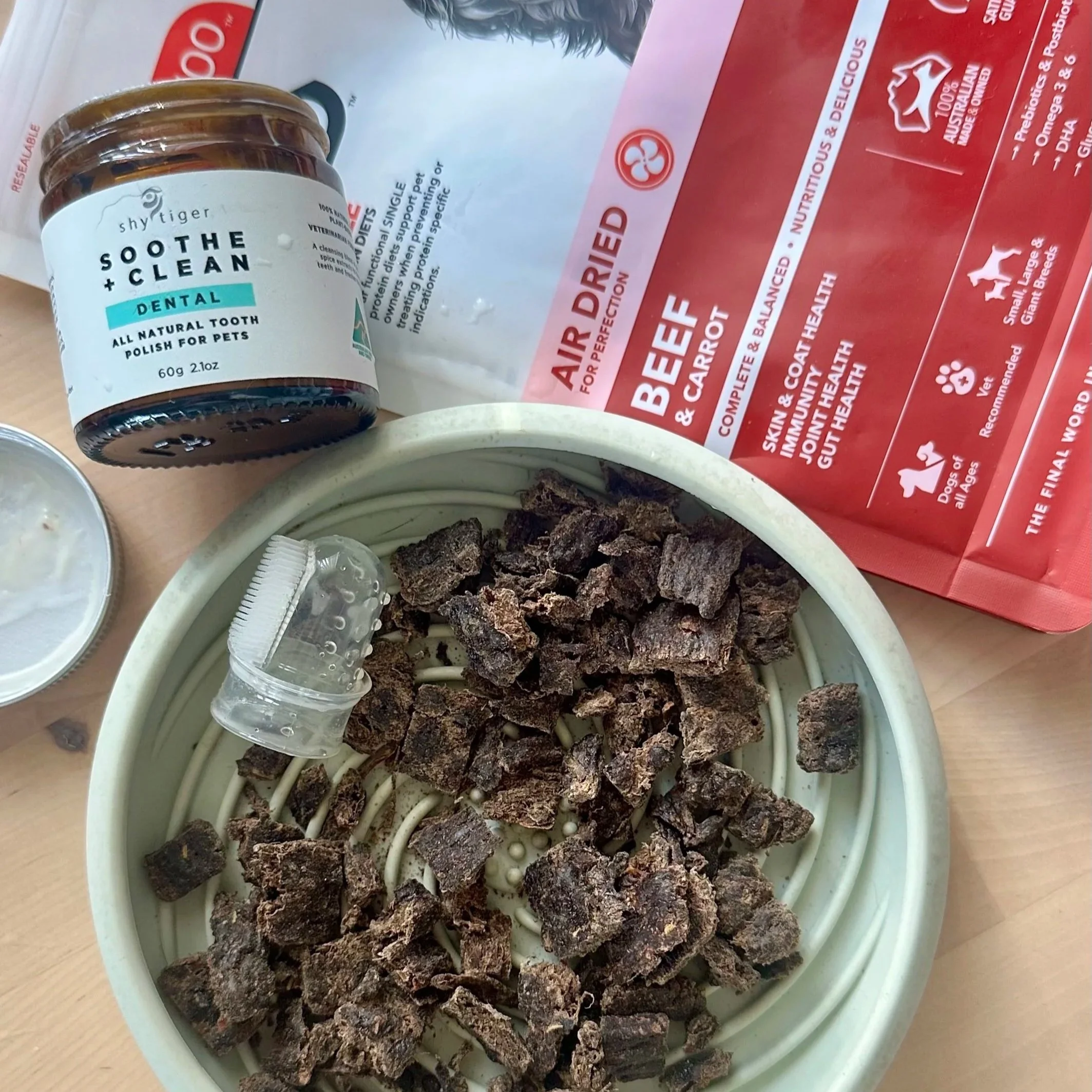How I Taught My Dog to Accept Tooth Brushing
Dog dental health is about more than just fresh breath. Regular brushing helps prevent tartar, plaque, and gum disease, keeping your dog healthy and happy. But most dogs aren’t born ready to accept a toothbrush in their mouth, especially adult rescue dogs who may be more sensitive to handling.
I wanted to make tooth brushing a cooperative, stress free experience for my dog. Using positive reinforcement, I broke the process into small, manageable steps. Each stage may need to be repeated over multiple sessions before moving on. Here’s how I did it.
Step 1: Choose a Safe Position
I prefer my dog to stand while brushing. This gives him the option to walk away if he wants and ensures I’m not invading a space he considers safe, like his bed. Reward your dog for staying in this position to build comfort.
Step 2: Reward the Position
Before even introducing the toothbrush, I reward my dog with treats for staying in the chosen position. This reinforces the idea that being in position is a positive experience.
Step 3: Introduce the Tools
Next, I bring out the toothbrush and dog-safe toothpaste. Any interaction with the tools, even sniffing or licking, is rewarded. This helps your dog associate the tools with good things.
Step 4: Start Brushing
I lift the gum gently and rub the finger toothbrush along his teeth for just a few seconds. Then I immediately reward him. Short, positive sessions are key to building tolerance and enjoyment.
Step 5: End on a Positive Note
It’s important to end the session before your dog opts out. Finishing on a positive note helps your dog remain comfortable and willing for the next session.
Step 6: High Value Reward
At the end of the session, I give a high value treat to celebrate success. This reinforces the experience as enjoyable and rewarding.
Tools I Used:
Treats: Prime100 SPD Air Dried Beef
Toothpaste & toothbrush: Shy Tiger Health
End of brushing reward: Bell & Bone collagen stick
Tips for Success
Be patient: Dogs learn at different paces; repeat each step over several days if needed.
Keep sessions short and positive.
Use positive reinforcement consistently.
Celebrate every small success.
With this approach, tooth brushing becomes a stress free, cooperative activity rather than a battle. Regular dental care will help your dog live a longer, healthier, and happier life.




Looking to improve your dog’s recall and attention? Try these 3 fun and force-free games to build reliable engagement and a stronger bond with your dog.